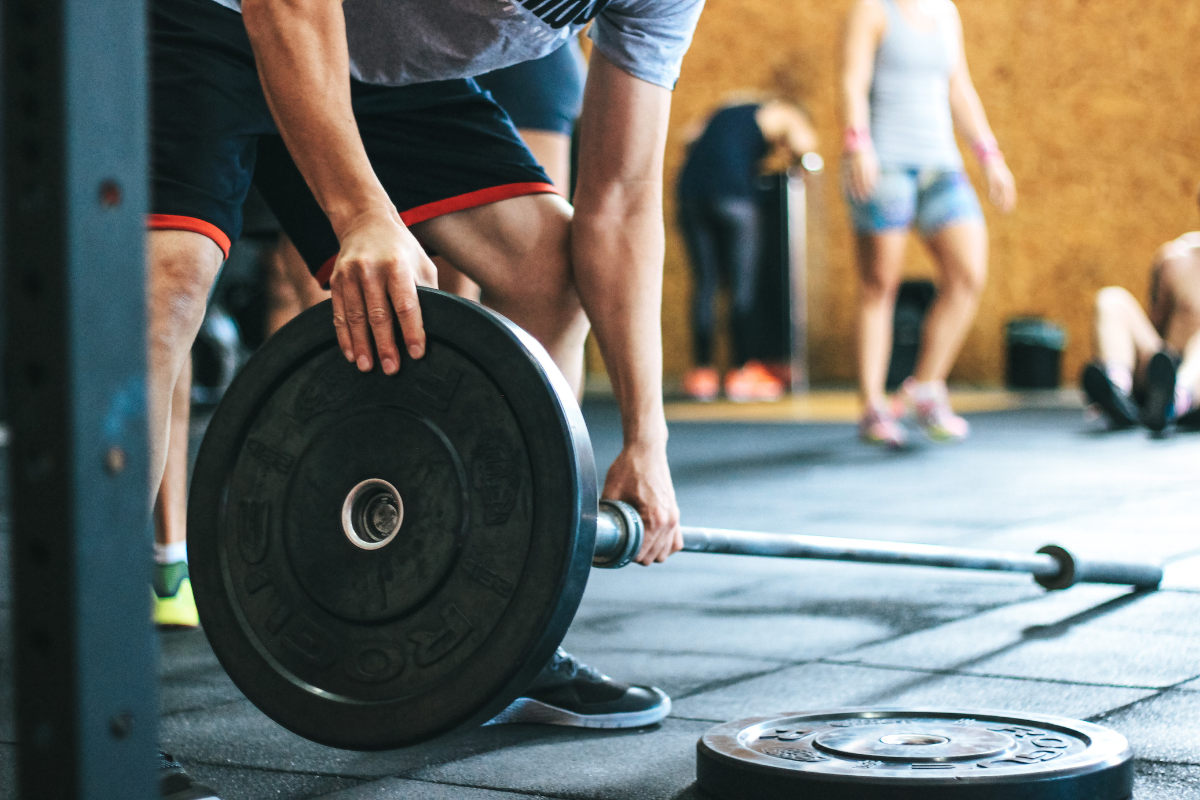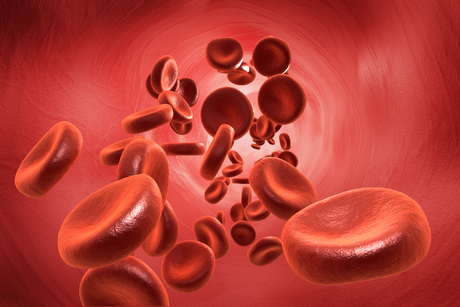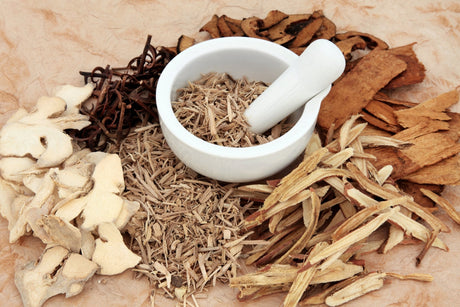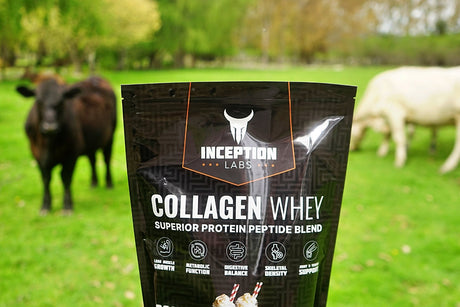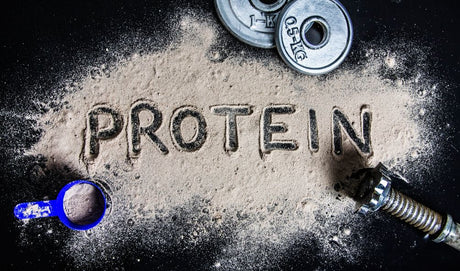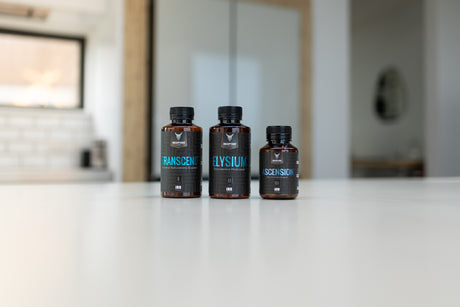A Guide to the Best Ingredients and Their Benefits
Pre-workout supplements are formulated to maximise your workout sessions. They enhance energy, concentration, and power while aiding endurance, recovery, and muscle development. However, not all pre-workouts are of the same quality. Some may contain unbeneficial, potentially harmful ingredients or are even prohibited by certain sports bodies. How do you select a pre-workout that aligns with your objectives? This article will walk you through the key ingredients to consider in a pre-workout and their impact on your performance. We will also advise on safely and effectively utilising pre-workout supplements. By the conclusion of this article, you will be equipped with the knowledge to make a well-informed choice about which pre-workout to purchase and how to use it.
Let's begin by addressing how to use your pre-workout properly. It's quite straightforward – refer to the instructions provided on the container. Every supplement you purchase should include a "directions for use" section, and it's recommended that you adhere to the manufacturer's guidelines for your chosen pre-workout product.
What ingredients do we want to see in pre-workouts?
L-Citrulline and Citrulline Malate are two ingredients commonly found in pre-workout supplements due to their potential to enhance athletic performance. L-Citrulline is an amino acid that is naturally produced by the body and can also be found in certain foods, such as watermelon. It plays a role in the urea cycle, which removes waste products from the body through urine excretion. L-Citrulline is converted into arginine, another amino acid that produces nitric oxide, which helps to dilate blood vessels and improve blood flow (Cox, Lehninger, & Nelson, 2000). This improved blood flow to working muscles can enhance athletic performance, particularly in anaerobic exercises such as strength training.
On the other hand, Citrulline Malate is a combination of citrulline, and malic acid found in apples and other fruits. This form of citrulline may have more significant effects because it potentially increases ATP (adenosine triphosphate), the fuel for working muscles. Some research suggests that Citrulline Malate may benefit muscular endurance and strength performance.
L-citrulline and Citrulline Malate promote vasodilation, which widens blood vessels and improves muscle oxygen usage, thereby boosting endurance. They also help reduce muscle soreness and improve recovery after workouts. In summary, L-Citrulline and Citrulline Malate are popular ingredients in pre-workout supplements due to their potential benefits for athletic performance.
Beta-alanine is a non-essential amino acid not utilised by the body to synthesise proteins. Instead, it combines with histidine to produce carnosine, which is stored in skeletal muscles (Artioli, Gualano, Smith, Stout, & Lancha Jr, 2010). Carnosine reduces the accumulation of lactic acid in muscles during exercise, leading to improved athletic performance (Derave, et al., 2007).
Supplementation with beta-alanine has been shown to increase muscle carnosine levels by up to 80%, reducing muscle acidity during high-intensity exercise and lessening fatigue. Beta-alanine improves athletic performance by reducing fatigue, increasing endurance, and enhancing performance in high-intensity exercises. In summary, beta-alanine is a non-essential amino acid that can enhance athletic performance through its role in the production of carnosine and the reduction of lactic acid accumulation in muscles during exercise. (Hill, et al., 2007) (Harris, et al., 2006) (Sale, Saunders, & Harris, 2010) (Hobson, Saunders, Ball, Harris, & Sale, 2012).
Caffeine is a well-studied and proven ergogenic aid that has been shown to increase power output (Giaister, et al., 2012) and cardiovascular performance (Desbrow, et al., 2012). It achieves this by increasing muscle contractility and delaying fatigue.
At low doses (100-150mg), caffeine blocks adenosine receptors, preventing the neurotransmitters from connecting with adenosine and causing feelings of tiredness and fatigue. This also increases neural excitement, resulting in the ‘mental boost’ associated with caffeine consumption.
At higher doses (300-400mg), caffeine’s effects on strength become more pronounced. However, caffeine is not without its drawbacks. It has been shown to inhibit the MTOR metabolic pathway (Wanke, et al., 2008), which induces muscle protein synthesis. Caffeine may inhibit the body's adaptation to exercise if taken excessively.
Caffeine also causes peripheral vasoconstriction, making it more difficult for blood to reach muscle tissue, reducing pump size and hindering muscle nutrient delivery, which is the opposite of what is desired during a workout.
In summary, caffeine is an important supplement to include in pre-workout regimens, but it is essential to consider the dose amount carefully. While it has been shown to improve power output and cardiovascular performance, excessive doses may inhibit muscle protein synthesis and cause peripheral vasoconstriction.
Creatine is a supplement often taken over time to enable its cumulative benefits. It is well known for its ability to promote muscular hydration and cellular ATP production. Creatine's potential as a myostatin inhibitor is one reason to include it in a pre-workout regimen. Myostatin is a compound in the body that inhibits muscular growth, and creatine has been shown to inhibit myostatin's growth-inhibiting effects. Thus, adding creatine to a pre-workout supplement or simply consuming it before a workout can enhance muscular growth by inhibiting myostatin.
N-Acetyl-L-Tyrosine (NALT) is a precursor to dopamine, a chemical released in anticipation of pleasure. Dopamine can be considered a motivational chemical, as higher dopamine levels are associated with an increased likelihood of pursuing pleasurable outcomes, such as completing a workout.
After completing a workout, there is a significant release of serotonin, which can decrease dopamine levels. When dopamine levels drop, the drive to seek pleasure also decreases. Therefore, maximising dopamine levels before and during a workout is desirable to delay the release of serotonin and prevent it from occurring during the workout.
The three main compounds used to increase dopamine levels are the amino acids Phenylalanine and Tyrosine and Mucuna Parians (L-Dopa). L-Dopa is known for its addictive properties and should not be taken regularly. Many foods already contain high quantities of Phenylalanine and Tyrosine. However, NALT is an acetylated form of the amino acid tyrosine that can cross the blood-brain barrier more efficiently than regular tyrosine, making it more effective at providing the brain with the necessary dopamine precursor before a workout.
Nitrates are one of the most effective ways to increase nitric oxide production. As mentioned in the section on caffeine, it is desirable to induce vasodilation to counteract caffeine's vasoconstrictive effect and improve the delivery of blood, nutrients, and water to muscles during exercise. While L-citrulline and Citrulline Malate can promote vasodilation, nitrates have a more pronounced effect. Combining citrulline and nitrates counteracts caffeine's vasoconstriction and optimises blood vessel dilation.
It is important to note that while some companies produce betaine nitrate and creatine nitrate, these compounds are not commonly found in pre-workout supplements. However, the following paragraphs will discuss a solution to this issue.
Betaine, also known as Trimethylglycine (TMG), is an osmoregulator that helps to maintain fluid balance in the circulatory system, promoting vasodilation and improving the delivery of nutrients and oxygen. Betaine is a metabolite of choline and plays an important role in circulatory health and methylation in the body. As such, it is generally considered healthy to consume betaine regularly, not just during workout periods.
Betaine is found in high quantities in beets, with 250-500ml of beetroot juice containing a significant amount of betaine, nitrates, and sugar. While sugar is often viewed negatively, it can serve as an excellent energy source at the cellular level when consumed as part of a pre-workout regimen. Sugar also plays an important role in osmoregulation, drawing water towards the bloodstream as blood sugar levels increase.
In an ideal scenario, one could combine their pre-workout supplement of choice with 250-500ml of beetroot juice and a pinch of salt to create a potent pre-workout beverage. Salt, like sugar, is beneficial for osmoregulation as it draws fluid out of cells and into the bloodstream. While sodium deficiencies are unlikely with modern diets, ensuring adequate sodium intake is still important for nerve development and signalling.
Banned & Prohibited Substances
Next, on our checklist, we will answer the question of banned or prohibited substances. You'll be hard-pressed to find a pre-workout that outright uses illegal substances in its ingredient make-up. This doesn't mean that all legal ingredients are permitted in all sports or federations. People for whom this applied will not need to hear this from this article. Still, if, for example, you are a member of the International Powerlifting Federation (IPF), you must comply with the World Anti-Doping Agency (WADA) Prohibited List of Substances and ensure that all the products you ingest do not contain any of these substances, even if consuming these substances would otherwise be completely legal.
Potentially harmful products
Yohimbe is a popular dietary supplement, commonly used to treat erectile dysfunction. There is also a growing trend among bodybuilders to use Yohimbe to help with fat loss.
Yohimbe is derived from the bark of Pausinystalia johimbe, an evergreen tree found in Western and Central Africa. Available in capsule or tablet formats, it is marketed under names such as yohimbe bark extract or yohimbine, which is the active component of yohimbe bark.
Yohimbine, the active ingredient in yohimbe, works by blocking alpha-2 adrenergic receptors in the body (Morales, 2000). These receptors play an essential role in inhibiting erections. Therefore, yohimbine is thought to help alleviate erectile dysfunction by blocking the receptors responsible for preventing erections. Yohimbine may also promote the release of nitric oxide. This could lead to the dilation of blood vessels and increased blood flow to sexual organs (Corazza, et al., 2014).
However, it’s important to note that certain health risks are associated with taking Yohimbe supplements, and it’s not recommended for everyone. Potential side effects of Yohimbe include stomach problems, such as diarrhoea and nausea, anxiety, high blood pressure, rapid heartbeat (tachycardia), sleeplessness, psychiatric symptoms, such as feeling anxious or nervous, dizziness, urinary problems, damage to the heart muscle (cardiotoxicity), and irregular heartbeat (Fletcher, 2020).
DMAA is an indirect sympathomimetic drug known as 1,3-dimethylamylamine, methylhexanamine or geranium extract. It was invented and developed by Eli Lilly and Company and marketed as an inhaled nasal decongestant from 1948 until it was voluntarily withdrawn from the market in the 1980s (Cohen, 2012).
Since 2006, DMAA has been sold extensively under many names as a stimulant or energy-boosting dietary supplement (Shipley, 2006). It’s claimed to be like certain compounds found in geraniums. However, its safety has been questioned as several adverse events and at least five deaths have been associated with DMAA-containing supplements (Kuehn, 2013) (Wardrop, 2012). Many sports authorities and governmental agencies ban it (WADA, Current).
DMAA is a sympathomimetic drug that acts on the nervous system's epinephrine, norepinephrine, and dopamine. This impacts things like adrenaline, motivation, and pleasure. In short, it is a stimulant that stimulates the hormones and neurotransmitters listed above, creating energy, inspiration, and mood elevation in the user (Singer & Lattman, 2013).
2-Aminoisoheptane, or Octodrine or DMHA, is a stimulant studied in animal studies from the 1940s through the 1970s. These studies found that Octodrine can increase animal blood pressure and cardiac output (Pieter, Travis, Keizers, Deuster, & Venjuis, 2018).
In fitness and bodybuilding, 2-aminoisoheptane is used in pre-workout supplements and fat burners due to its proposed dual effect of boosting energy and suppressing appetite. However, consumers are urged to avoid weight loss supplements that are labelled as containing 2-aminoisoheptane. Researchers have identified it as an unapproved, DMAA-like stimulant in several over-the-counter weight-loss products. It’s chemically similar to ephedrine, a compound banned by the U.S. Food and Drug Administration (FDA) in 2004 due to serious side effects.
Conclusion
By exploring the essential ingredients such as L-Citrulline, Citrulline Malate, Beta-Alanine, Caffeine, Creatine, N-Acetyl-L-Tyrosine (NALT), and Nitrates, you now have the knowledge to select pre-workout products that align with your fitness goals. These ingredients offer benefits such as improved endurance, reduced fatigue, increased focus, and enhanced muscle growth. It's crucial to maintain a balanced approach, especially with caffeine, as excessive consumption may have counterproductive effects.
We’ve addressed the importance of being aware of banned or prohibited substances in your pre-workout supplements and we've highlighted potentially harmful ingredients like Yohimbe, DMAA, and 2-Aminoisoheptane, emphasizing the need for caution when choosing supplements.
By following the guidance provided here, you are equipped to make wise choices in selecting the right pre-workout supplement and maximizing its benefits while prioritizing your safety and health during your fitness journey.
Supplement Solutions stocks a wide range of high-quality, specially-selected pre-workout supplements from top New Zealand and International brands.
References
Cox, M., Lehninger, A. L., & Nelson, D. R. (2000). Lehninger principles of biochemistry, 3, 449. doi:978-1-57259-153-0
Cohen, P. A. (2012, July). DMAA as a dietary supplement ingredient. Archives of Internal Medicine, 172(13), 1038-1039. doi:10.1001/archinternmed.2012.1677
Corazza, O., Martinotti, G., Santacroce, R., Chillemi, E., Di Giannantonio, M., SChifano, F., & Cellek, S. (2014). Sexual enhancement products for sale online: raising awareness of the psychoactive effects of yohimbine, maca, horny goat weed, and Ginkgo biloba. Biomed Res Int, 2014, 841798. doi:10.1155/2014/841798
Artioli, G. G., Gualano, B., Smith, A., Stout, J., & Lancha Jr, A. H. (2010, Jun). Role of beta-alanine supplementation on muscle carnosine and exercise performance. Med Sci Sports Exerc, 42(6), 1162-73. doi:10.1249/MSS.0b013e3181c74e38
Cohen, P. A. (2012, July). DMAA as a dietary supplement ingredient. Archieves of Internal Medicine, 172(13), 1038-1039. doi:10.1001/archinternmed.2012.1677
Corazza, O., Martinotti, G., Santacroce, R., Chillemi, E., Di Giannantonio, M., SChifano, F., & Cellek, S. (2014). Sexual enhancement products for sale online: raising awareness of the psychoactive effects of yohimbine, maca, horny goat weed, and Ginkgo biloba. Biomed Res Int, 2014, 841798. doi:10.1155/2014/841798
Cox, M., Lehninger, A. L., & Nelson, D. R. (2000). Lehninger principles of biochemistry, 3, 449. doi:978-1-57259-153-0
Derave, W., Ozdemir, M. S., Harris, R. C., Pottier, A., Reyngoudt, H., Koppo, K., . . . Achten, E. (2007, Nov). beta-Alanine supplementation augments muscle carnosine content and attenuates fatigue during repeated isokinetic contraction bouts in trained sprinters. J Appl Physiol (1985), 103(5), 1736-43. doi:10.1152/japplphysiol.00397.2007
Desbrow, B., Biddulph, C., Devlin, B., Grant, G. D., Anoopkumar-Dukie, S., & Leveritt, M. D. (2012). The effects of different doses of caffeine on endurance cycling time trail performance. J Sport Sci, 30(2), 115-20. doi:10.1080/02640414.2011.632431
Fletcher, J. (2020, March 6). Yohimbe: Uses and risks. (Z. R. Cochrane, Editor) Retrieved from Medical News Today: https://www.medicalnewstoday.com/articles/yohimbe
Giaister, M., Patterson, S. D., Folley, P., Pediar, C. R., Pattison, J. R., & Mcinnes, G. (2012, Apr). Caffeine and sprinting performance: does responses and efficacy. Strength Cond Res, 26(4), 1001-5. doi:10.1619/JSC,0b13e31822ba300
Harris, R. C., Tallon, M. J., Dunnett, M., Boobis, L., Coakley, J., Kim, H. J., . . . Wise, J. A. (2006, May). The absorption of orally supplied beta-alanine and its effect on muscle carnosine synthesis in human vastus lateralis. Amino Acids, 30(3), 279-89. doi:10.1007/s00726-006-0299-9
Hill, C. A., Harris, R. C., Kim, H. J., Harris, B. D., Sale, C., Boobis, L. H., . . . Wise, J. A. (2007, Feb). Influence of beta-alanine supplementation on skeletal muscle carnosine concentrations and high intensity cycling capacity. Amino Acids, 32(2), 225-33. doi:10.1007/s00726-006-0364-4
Hobson, R. M., Saunders, B., Ball, G., Harris, R. C., & Sale, C. (2012). Effects of β-alanine supplementation on exercise performance: a meta-analysis. Amino Acids, 43(1), 25-37. doi:10.1007/s00726-011-1200-z
Kuehn, B. M. (2013, November). Dietary supplement linked to cases of acute hepatitis. JAMA, 310(17), 1784. doi:10.1001/jama.2013.281868
Morales, A. (2000, Mar). Yohimbine in erectile dysfunction: the facts. Int J Impot Res, 12 Suppl(1), S70-74.
Pieter, C. A., Travis, J. C., Keizers, P. H., Deuster, P., & Venjuis, B. J. (2018). Four experimental stimulants found in sports and weight loss supplements: 2-amino-6-methylheptane (octodrine), 1,4-dimethylamylamine (1,4-DMAA), 1,3-dimethylamylamine (1,3-DMAA) and 1,3-dimethylbutylamine (1,3-DMBA). Clinical Toxicology, 56(6), 421-426. doi:10.1080/15563650.2017.1398328
Sale, C., Saunders, B., & Harris, R. C. (2010, Jul). Effect of beta-alanine supplementation on muscle carnosine concentrations and exercise performance. Amino Acids, 39(2), 321-33. doi:10.1007/s00726-009-0443-4.
Shipley, A. (2006, May 8). Chemist's New Product Contains Hidden Substance. The Washington Post.
Singer , N., & Lattman, P. (2013, April 16). F.D.A. Issues warning on Workout Supplement. New York Times.
WADA. (Current). Prohibited List. Retrieved from World Anti-Doping Agency: https://www.wada-ama.org/en/resources/world-anti-doping-program/prohibited-list
Wanke, V., Cameroni, E., Uotila, A., Piccolis, M., Urban, J., Loewith, R., & De Virgilio, C. (2008, Jul). Caffeine extends yeast lifespan by targeting TORC1. Mol Microbiol, 69(1), 277-85. doi:10.1111/j.1365-2958.2008.06292.x
Wardrop, M. (2012, May). Claire Squires: runner who died during London Marathon 'suffered from heart condition.


